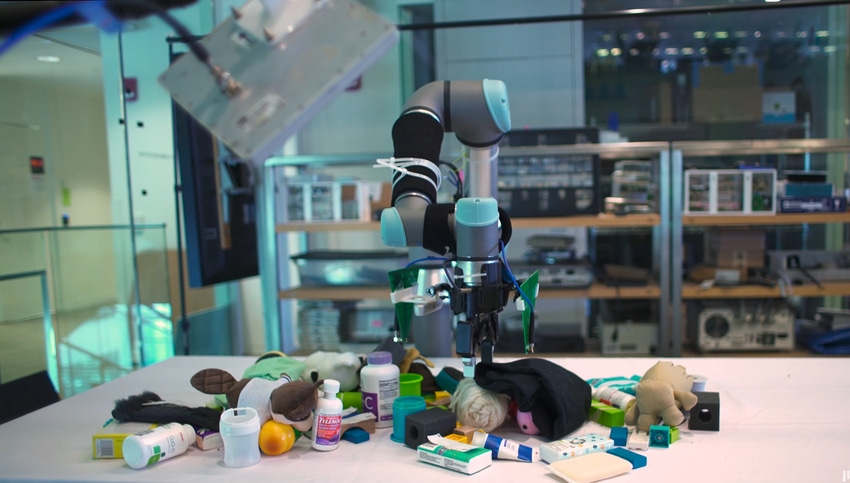Robotic Systems Developed to Find Lost Items
MIT Researchers are honing in on robotic systems to sift through objects and locate items

For all those who suffer from the daily chore of finding missing keys, phones and wallets before leaving the house, the world of robotics may have an answer for you. Innovators are creating robotic systems to help users find lost items, with these smart devices designed to rapidly sort through clutter and identify objects buried under piles of other household items.
One example is a fully integrated robotic arm from MIT, known as RFusion, which can identify and retrieve items hidden beneath other objects. The robotic arm combines visual data with radio frequencies (RF) emitted from an antenna attached to the arm’s gripper. These frequencies bounce off of tags a user can attach to objects, and as the signals can travel through most surfaces, RFusion can locate a tagged item even if it’s obscured by other objects, for instance, a pile of mail or laundry. The camera is used to verify the item selected is indeed the correct one.
According to MIT, the system has an accuracy rate of 96% and can find items within a few minutes.
More recently, another MIT team unveiled the algorithm FuseBot to similarly find lost items, the main difference being that the newer system does not require the lost item to be tagged to be found. Instead of sending RF signals, FuseBot uses algorithms that can logically predict the probable location of an item, as well as determine the best way to extract it.
According to the team, FuseBot recovered a lost item with a 95% success rate.
The model, if scaled, also has potential industrial use cases such as warehouse order fulfillment or retail back-of-house, as well as in more high-pressure situations such as disaster zones to search through the rubble.
“As the research evolves, it would be interesting to explore how incorporating more complex models that account for deformability would allow FuseBot to achieve even higher efficiencies,” the FuseBot team wrote in their study results.
“Having robots that are able to search for things under a pile is a growing need in industry today,” said Fadel Adib, an associate professor in MIT’s department of electrical engineering and computer science when talking about RFusion. “Right now, you can think of this as a Roomba on steroids, but in the near term, this could have a lot of applications.”
About the Author(s)
You May Also Like



.png?width=700&auto=webp&quality=80&disable=upscale)
.png?width=700&auto=webp&quality=80&disable=upscale)
.png?width=300&auto=webp&quality=80&disable=upscale)
.png?width=300&auto=webp&quality=80&disable=upscale)
.png?width=300&auto=webp&quality=80&disable=upscale)
